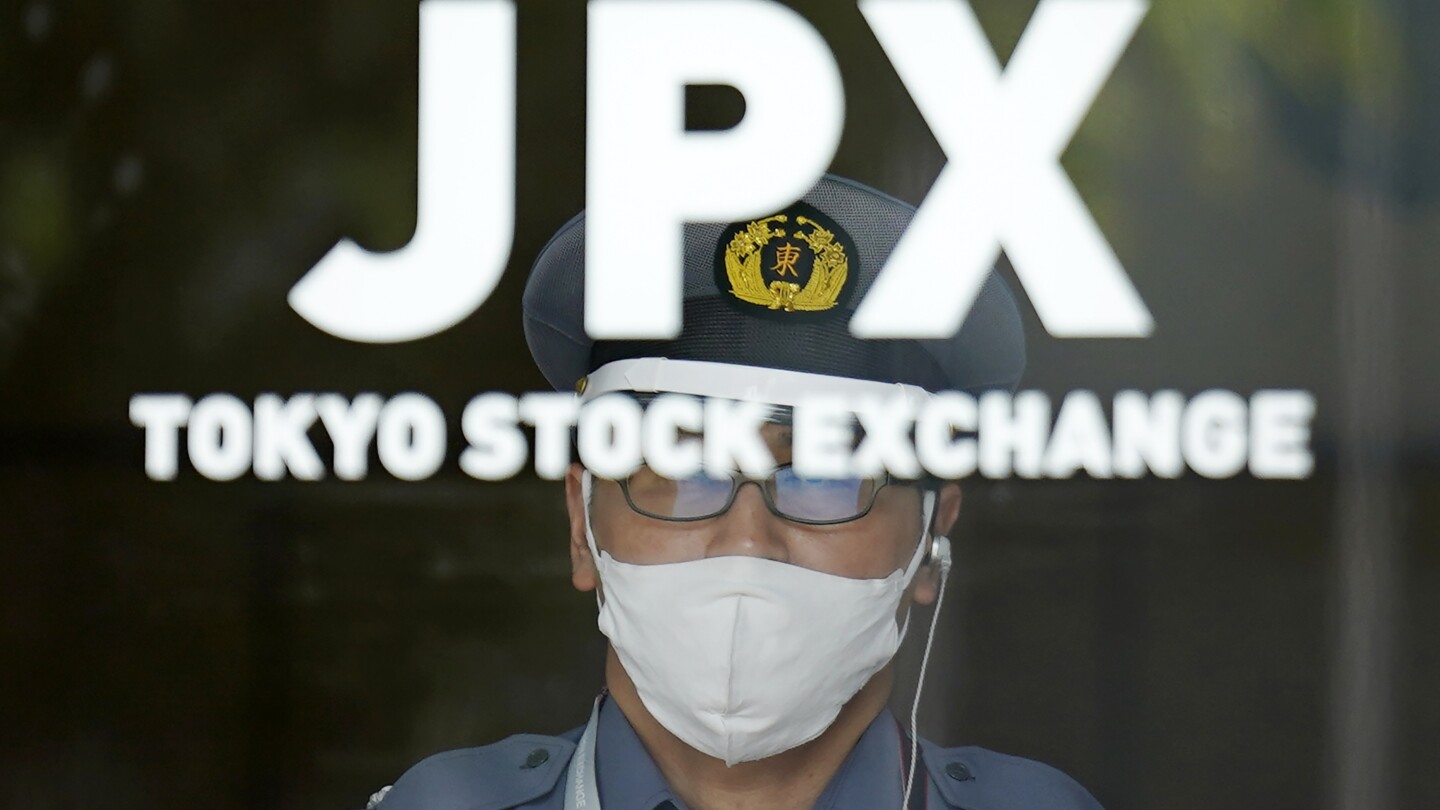TOKYO (AP) — Asian shares were mostly higher Friday after China reported that its slowing economy showed signs of stabilizing in August.
Benchmarks rose in most regional markets but fell back in Shanghai. Oil prices advanced.
Hong Kong’s Hang Seng surged 1.0% to 18,219.51 in afternoon trading, while the Shanghai Composite index was down 0.5% at 3,110.22.
Late Thursday, the People’s Bank of China said it would cut the reserve requirement for banks by 0.25 percentage points as of Friday, “In order to consolidate the foundation for economic recovery and maintain reasonable and sufficient liquidity.”
Further boosting sentiment, the government reported Friday that China’s industrial output rose 4.5% in August from a year earlier, up from 3.7% in July. That is seen as a sign the economy may be breaking out of its post-pandemic malaise.
Japan’s benchmark Nikkei 225 surged 1.2% to 33,551.04. Australia’s S&P/ASX 200 jumped 1.3% to 7,279.00. South Korea’s Kospi added 1.2% to 2,603.58.
SoftBank Group Corp., which fully owned chip designer Arm Holdings before it began trading on the Nasdaq on Thursday, rose 2.1% in Tokyo trading.
Arm’s shares jumped 24.7% in their debut on Nasdaq. The strong welcome could be an encouraging signal for the IPO market, which has slowed since the stock market began tumbling early last year on fears about higher interest rates.
“The Arm IPO optimism and China’s further stimulus measures boosted sentiment across Asian stock markets,” Tina Teng, a markets analyst at CMC Markets APAC & Canada, said in a commentary.
On Wall Street, the S&P 500 climbed 0.8% to 4,505.10 for its best day in two weeks. The Dow Jones Industrial Average rallied 1% to 34,907.11, and the Nasdaq composite added 0.8% to 13,926.05.
Some of the strongest action was in the bond market, where Treasury yields swung up and down several times. While the reports bolstered hopes the U.S. economy will avoid a deep recession, the strength underlying them could also add upward pressure on inflation.
One report said U.S. shoppers spent more at retailers last month than economists expected. That reflects a remarkably resilient job market, which has withstood a steep jump in interest rates. A separate report Thursday morning said fewer workers applied for unemployment benefits last week than expected, which implies the number of layoffs remains low.
A third report said prices getting paid at the wholesale level rose more last month than economists expected. That could be a discouraging signal for households if the higher-than-expected inflation gets passed on to shoppers at the consumer level.
To try to get inflation back down to its 2% target, the Federal Reserve has been increasing interest rates sharply since early last year. The hope on Wall Street is that a slowdown in inflation since last summer means the Fed is done with its rate hikes, which slow the economy and hurt investment prices.
Treasury yields initially jumped following Thursday’s reports on fears they could push the Fed to raise rates again or at least to keep rates higher for longer. But economists pointed out that much of last month’s acceleration in wholesale inflation was due to higher fuel prices, which can shift direction sharply and quickly.
Ignoring those and other particularly volatile prices, underlying inflation trends in Thursday’s report were closer to economists’ expectations.
Traders pared back expectations for the Fed to raise rates again some time this year, though they’re still betting on a roughly 40% chance of that, according to data from CME Group.
Hopes that the Fed may be done hiking rates may be overdone, warned Mike Loewengart, head of model portfolio construction at Morgan Stanley Global Investment Office.
“The Fed is still likely to remain on hold next week, but if the economy continues to surprise to the upside, all bets are off as to what they’ll do after their final two policy meetings of the year,” he said.
In energy trading, benchmark U.S. crude rose 73 cents to $90.89 a barrel. Crude has been climbing for months as oil-producing countries try to support its price by curtailing their supplies. Brent crude, the international standard, gained 64 cents to $94.34 a barrel.
In currency trading, the U.S. dollar inched up to 147.49 Japanese yen from 147.42 yen. The euro cost $1.0664, up from $1.0645.

